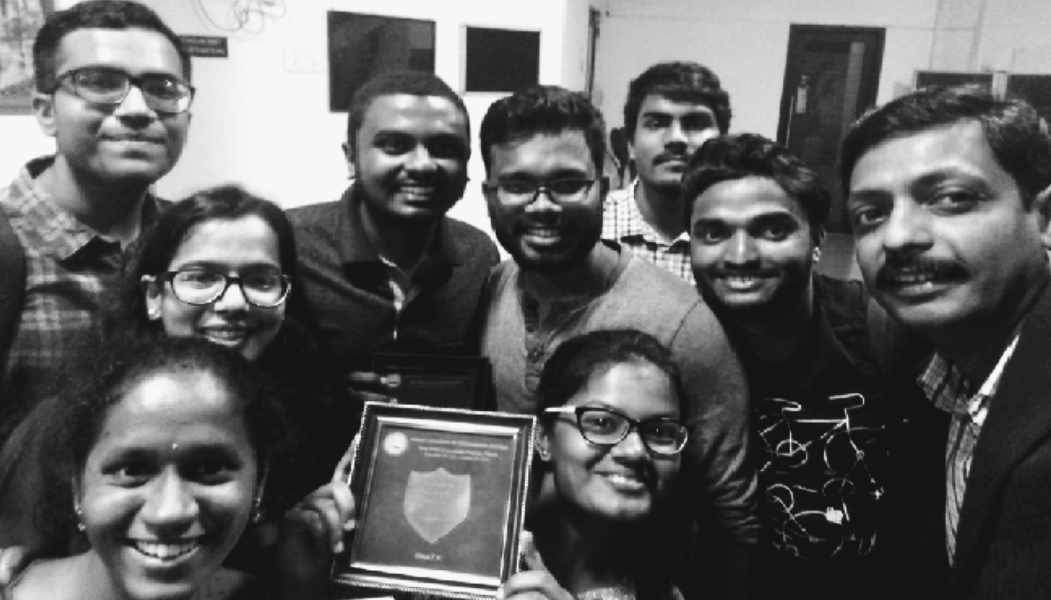Note: This article is based on personal experiences of the writer, hearsay and crowdsourced responses on social media. It does not attempt to generalize student experiences nor act as a representative of the grievances.
As a primarily residential campus with students staying far from home, their health and welfare should remain the primary concern of the admin. The Institute hospital acts as the nodal institution in this mission. Yet, when one sees a consistent pattern of student complaints or lived experiences that suggest otherwise, it shows a mismatch of priorities, efficiency of action or stark inaction in itself.
Although the hospital is open 24/7, most specialists and doctors are present between 8:30 and 6 PM, coinciding with the class hours for students. Certain specialists are available only for a 1-2 hour window on one day of the week. Beyond when you go, a duty doctor or a nurse will likely tend to your concerns. Even if one goes within working hours, only one doctor, two at best, are dealing with general illnesses. With an average of twenty students at any given point, a wait time is unavoidable and compounded by doctors’ lunch breaks and their ’rounds’ timings.
Two auxiliary services are in operation as well, the in-house pharmacy and the third party scan and diagnostics center. While the latter has predominantly good feedback, students report that the difficulty lies in getting the prescriptions by the doctors to access these facilities. The pharmacy frequently rejects prescriptions from family or private doctors as a valid ground to obtain medicine. Students were alarmed upon seeing an email complaining that the pharmacy handed out a blood pressure tablet for an ear infection because ‘they looked the same.’ More recently, the presence of an institute physiotherapist to deal with sports injuries is a step in the right direction, but the jury is still out on effectiveness. Needless to mention, the presence of full-time external counselors indicates a shift towards a more holistic healthcare approach.
Yet all is not as rosy as it seems. People might be familiar with the famous legal maxim “innocent until proven guilty.” It is almost comical how the Institute Hospital has flipped it on its head. The medical staff is absolutely convinced that everyone walking in is doing their best to scam the hospital to get a day off college. The burden of proof falls on the students who need to convince the unrelenting doctors that they are, in fact, sick. Diagnosis and treatment aside, the mere admittance of the hospital that a student is somehow ill requires overemphasis, dramatization, and a constant fear of trivialization within the students. It is not enough for students to be sick but are now tasked with looking the part as well. The unspoken expectation is that one must embody illness to satisfy the discerning eyes of the medical staff.
Assuming one can convince the doctor of their illness, procuring a medical certificate is another ball game. To be exempted from class or receive make-up exams, one must be admitted to the hospital. This perfectly aligns with the party line of the admin, who constantly re-emphasize that unless you are so sick that you are unable to walk or function, you should compulsorily be attending classes, exams, and what have you. Mental and physical fatigue, lack of concentration, cycling to classes in unfavorable weather conditions, or just a general want of rest while sick are somehow invisible to their eyes. The perfect end to this loop is that while the admin mandates hospital admission to relax attendance policies, the hospital rarely admits the students. Students are not admitted to the hospital except for significant diseases such as typhoid, dengue, or malaria. While this makes sense because of capacity constraints and most other illnesses are self-treatable in hostels, the visceral hook remains about how hospital admission is tied to medical certificates and absenteeism.
This brings us to another important facet of this issue: students are disincentivized from seeking private healthcare. While the institute hospital will treat students with precision and empathy in an ideal world, the opposite perception among the student body leads most students to seek consultation elsewhere. None of these certificates are considered valid and are not even included in the medical file they maintain for each student, which is vital for graduation or other opportunities. This generates what one would call a Catch-22 situation, a paradoxical instance where you cannot do one thing until you do another thing, but you cannot do the second thing until you do the first.
This article also wishes to focus on the absurdity of encounters students face with the hospital through crowd-sourced anecdotes collected on our social media handles. Respondent A recalls an instance where they went to the hospital with a bleeding wound from a cycle crash and got yelled at by the medical staff for showing up after working hours. Respondent B recalls an incident where they asked for a medical certificate, and the doctor proceeded to explain how she was sick, arguably more sick than the student, and how that did not stop her from showing up to work and, therefore, the student has no excuse to skip classes. Some respondents report that the doctors begin some course of treatment, which is almost detrimental in the case of orthopedic procedures, even before getting scans or test reports. Another respondent recalls an instance where they had fever and diarrhea to the point where they had been injected with saline but were still denied an exemption from the exam because the temperature was just below the threshold for what they considered ‘sick enough.’ The interesting thread among the multiple anecdotes we received was not a pattern of behavior but a lack thereof. Individual experiences with the hospital are inconsistent, unprecedented, and even borderline bizarre. While there is a common consensus that the staff are rude, irrational, and hostile towards student concerns, there is still an air of uncertainty on how that will manifest for the next student. The air of anxiety around institutions of power and the fear of being invalidated are common across all administrative functions. The ‘absurdity’ of anecdotes induces significant discomfort in any student who enters; they may be completely taken care of or subject to undue discomfort. There is no way to know what will happen. The ambivalence scares us as there is no rationale for the way irrationality functions. The fear of irrationality is a site of state power. Interestingly, all of the above happens with little or no mechanism for recourse except a Google form being circulated each semester, whose responses and redressals ever evade the public eye.
Even though viral fevers, fungal infections, and vector-borne diseases are ever prevalent on campus, one rarely sees the Institute hospital engaging in preventive medical care. The sanitation of campus and, by extension, the cleanliness of the hostel bathrooms open up the students to a host of urinary tract infections. Hostel washrooms are insufficiently maintained, especially in girls’ hostels where the disposal of sanitary napkins is ironically the most unsanitary affair. The mess food needs to offer more nutritional value, and the presence of uncooked, spoilt, or contaminated food is commonplace, almost expected, in any caterer. In any instance of rain, one sees puddles and potholes that function as a breeding ground for mosquitoes. The dense forests around the hostel zones are host to various bugs, scorpions, and insects that may act as vectors or allergens. Monitoring mess food, bleaching stagnant water, ensuring restroom hygiene, vaccination awareness, and disability-friendly infrastructure are all simple yet effective means to ensure overall physical wellness. Yet one is left wondering where the Institute Hospital even fits into the realm of these preventable actions. Any email from the hospital emphasizes hand hygiene, social distancing, and mask-wearing, all of which are important, but conveniently ignores the self-inadequacy of preventive action and risk-borne environments while placing the burden of precaution on the students themselves. Even in the light of the ongoing typhoid outbreak, it is pretty evident that an institute eatery/water source has been the cause for acute sickness in over forty students. Remedial measures aside, how did the collective infrastructure let the situation get so direct? If the pandemic is any evidence, one can assume that the hospital is insufficiently connected to the health hygiene secretaries, CCW, and the admin at large or a shared delusion of functionality among these passive actors.
Article by your friendly neighbourhood whistleblower




